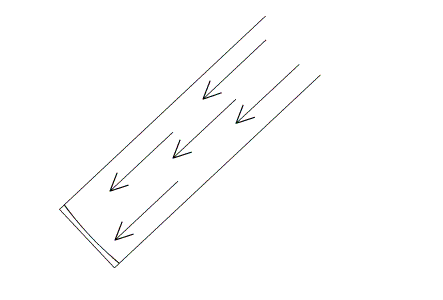Directions
When you want to measure a lineair distance that distance has a direction. Every speed over a lineair distance therefore has a direction too. All things that move in a straight line at a do that in a direction. This also applies to the speed of light.
Direction is essential to determine distance or speed. When in a rotational movement the direction constantly changes, but one direction at the time.
Observing the universe means that electromagnetic waves are caught in a telescope. This telescope needs to be directed to a point in space. Parallel waves go through a focus point by a mirror or lens. All waves ‘out of direction’ won’t go through the focus point. That makes a telescope a sort of filter. The image obtained was created by the parallel waves that entered the telescope. (The length of a telescope compared to the light speed rules out a bending of waves within the tube.)
A telescope separates directions in space by filtering light waves that come from a certain direction. A telescope kan be aimed at all directions in space. All directions make up space.
In observation direction of electromagnetic waves is most important. Bended light waves wouldn’t create a clear image.
The bending light waves of the theory of relativity create a problem. If every wave is more or lest influenced by gravity, observation shouldn’t be possible.
Nearly not every light wave passes at the same distance of an object with a certain mass, so the bending of light waves can’t be regular.
An equasion with direction in it, has to have a result that applies for that direction. For that reason the result can’t be a 3-dimensional result. One direction can’t become more than only one direction.
Another issue emerges. If C as constant represents the speed of light. The speed of light, is a scalar quantity having only a magnitude without a direction.
Therefor the speed of light can’t be represented by a velocity or vector. No direction means no space because space represents all directions.
So the presence of C eliminated the concept of space. Still one can see for instance the moon in a direction. Light from the moon reaches the earth. The detail in which we see the moon clearly suggests that light waves have a direction. So looking at our surroundings contradicts the assuption that light has no direction.
When light speed has no direction light speed has no origin. No origin means no existence, although we experience light.
By “solving” a relavity problem theoretical, contradictions are created in reality. A theory of relativity, against the intuition it is called.
But why have astrophysicists confidence in the observations they do. How did they determine the speed of light? Then why sending the space telescope Hubble into space to get a better understanding of the universe? All has to do with collecting light from a certain direction. Is it in the observer where light gets its direction?


